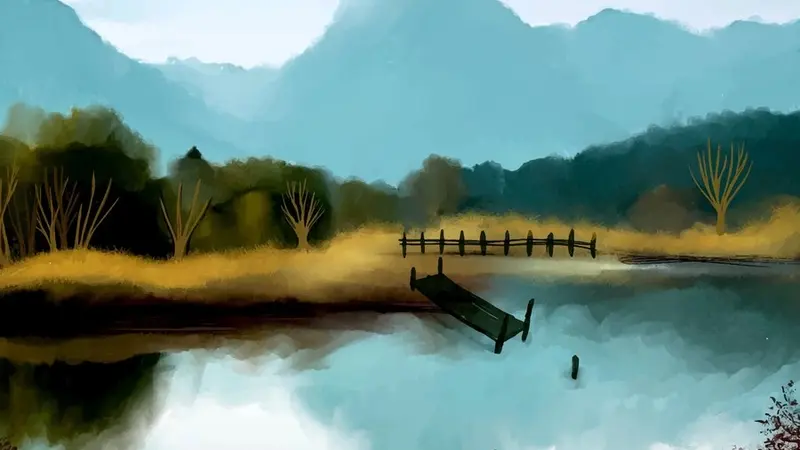Creativity has long been the domain of the human mind, from the vivid paintings of artists to the telling stories of writers-a representation of how we view, feel, and interpret the world. Now, with artificial intelligence up our sleeve, the way we will look at creating and consuming art is about to change in a big way. This is no longer just an enabler technology but part of an active creative workflow for the artist and the writer. Let’s dive into how AI is changing the future of creativity and what that means for those who craft stories and visuals.
The AI Art Revolution
AI is offering artists an incredible playground. From abstract design to the styles of old masters, AI opened a wide portal for experimentation. It was made possible because such AI-powered tools are designed on a big dataset of images, styles, and techniques, and can hence generate original pieces that appeal to human creativity.
Take, for instance, the recent rise of generative art. AI platforms like DeepArt and Runway ML enable users to create stunning visuals by simply inputting a concept or a style preference. What this doesn’t mean is that artists are being replaced; rather, they now have access to new collaborators who can bring their ideas to life in ways previously unimaginable. Another exciting application is in the design of video games and virtual reality art. Designers can now create complex landscapes, cities of the future, or dream worlds faster than ever before. These visuals allow for immersive experiences where audiences delve into a richer and more engaging world.
Writers Enter the Visual Realm
Whereas writers conventionally work with words, AI is allowing them to cross over into the world of visual storytelling. Applications such as text to image allow the writer to build visual representations of their narratives. This could be used for mood boards, visualization of worlds, or even designing book covers.With the integration of AI, an author can now create a visual corresponding to a mystical forest that is described in a book. Not only does this hone the ideas of the creators, but it also creates another level of immersion for the readers. Such technology even finds its place among publishers and marketers as they work to create promotional materials fully indicative of the story.
Moreover, AI writing assistants ease the process for authors to maintain the creative element in telling the story. They suggest synonyms, refine grammar, and even give plot ideas according to the writer’s preference. This does not replace the depth of human imagination but instead serves as a support partner in the creative process.
Breaking Barriers to Collaboration
It is also changing the way artists and writers collaborate. Conventionally, these fields operated in silos, with writers handing over their work to designers or illustrators. AI tools are breaking down barriers, enabling real-time collaboration between the written word and visual art.For example, screenwriters will be able to use AI in storyboarding a script as a means of clearly envisioning their story with the director and designers, while artists will be able to use AI to generate captions or textual descriptions of their work and make it more accessible for diverse audiences. This is the synergy that has been apparent in the world of digital content. For instance, the social media manager will utilize AI to generate clear posts, which balance striking visuals with engaging text. This will make the process quicker, saving time while creativity remains high.
Role of AI in Education and Accessibility
AI is changing the game in professional creativity and democratizing the amateur’s and enthusiast’s making of art and writing. Using Canva or even the latest Adobe tools powered by AI, quite literally allows users of any skill level to create amazing visuals or write content in polished fashion.For education, AI teaches creative skills in both classrooms and workshops; the basics of design, storytelling, and even coding are included through interactive AI-driven platforms. The tools adapt to individual learning styles, making creativity more inclusive and democratized.
Most importantly, AI is enabling people with disabilities to engage in creative work. For instance, voice-activated tools and predictive text software allow people to write or draw without having to physically input their work. This inclusivity breaks down barriers, ensuring that creativity knows no bounds.
Ethical Considerations in AI-Driven Creativity
While great advantages are brought into the sphere of art and literature, there is a set of ethical problems entailed with it. The questions regarding originality, authorship, and copyright take center stage in this discussion. When a piece of art or a certain text gets generated with AI, to whom does it belong-the creator of the AI, the user, or the AI itself?
There is also the risk of over-reliance on the AI tool. If creators become overly reliant on such technologies, does that water down the genuineness of human expression? The balance between leveraging AI and retaining more traditional creative approaches has to be struck.
Art and writing with AI integrated into them are still in their infancy, but the possibilities are endless. As these tools continue to evolve, they will no doubt change how we approach creativity. The key for artists and writers is to make use of AI as an enabler, not a replacement.
The integration of AI into workflows opens the possibilities existing only in the imagination for storytelling and design; whether it be text set to make visuals or lighten tasks for writing, the gamut is there. To say it briefly, AI does not restrict creativity and does the opposite. Be an artist who wants to tinker with generative art or a writer who wants to see and shape his or her story; now is the time to move into great things that AI can offer. The creative landscape is about to change, and it is time to decide what’s next. Visit Us for More details.
